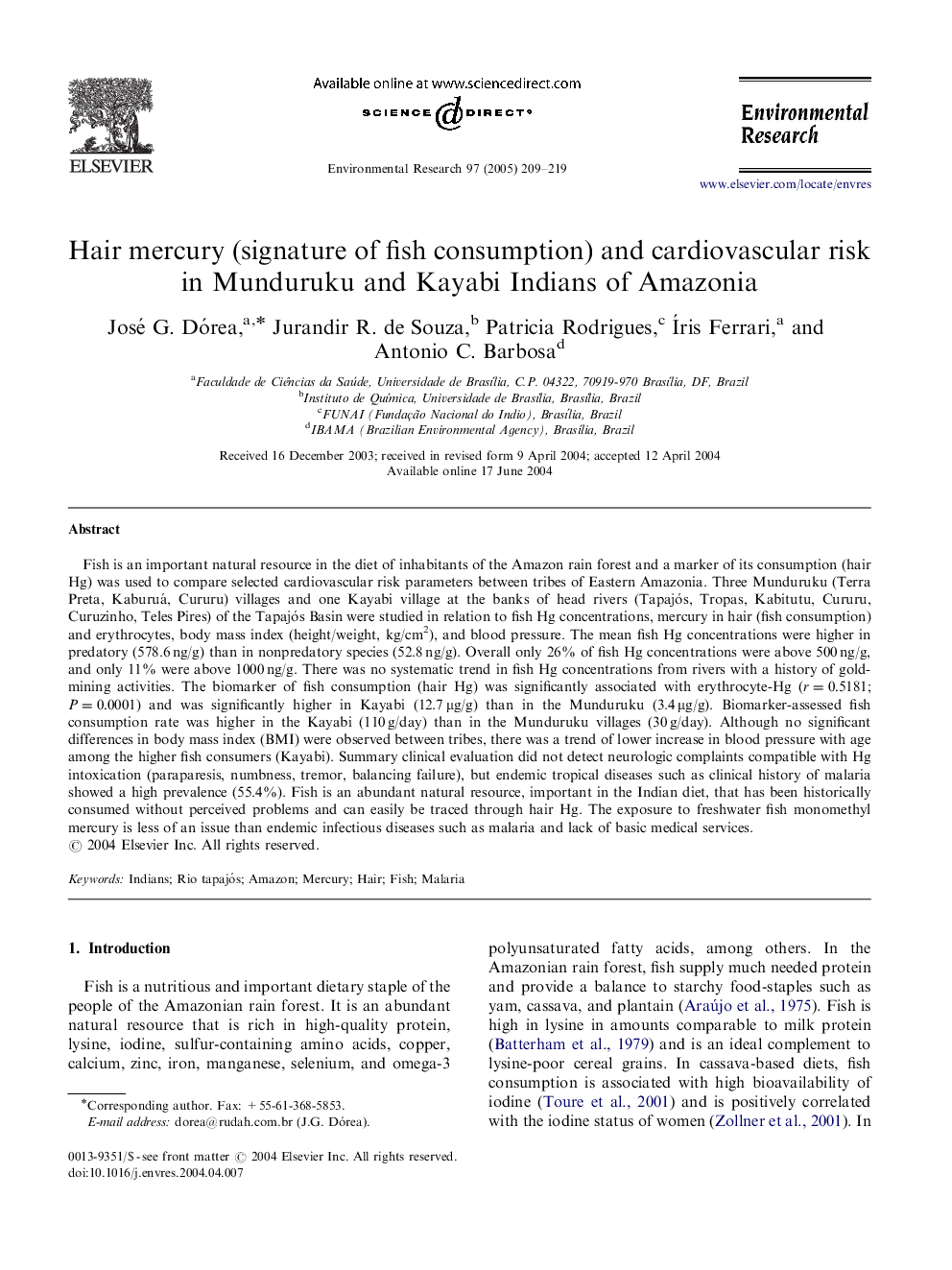| Article ID | Journal | Published Year | Pages | File Type |
|---|---|---|---|---|
| 9464826 | Environmental Research | 2005 | 11 Pages |
Abstract
Fish is an important natural resource in the diet of inhabitants of the Amazon rain forest and a marker of its consumption (hair Hg) was used to compare selected cardiovascular risk parameters between tribes of Eastern Amazonia. Three Munduruku (Terra Preta, Kaburuá, Cururu) villages and one Kayabi village at the banks of head rivers (Tapajós, Tropas, Kabitutu, Cururu, Curuzinho, Teles Pires) of the Tapajós Basin were studied in relation to fish Hg concentrations, mercury in hair (fish consumption) and erythrocytes, body mass index (height/weight, kg/cm2), and blood pressure. The mean fish Hg concentrations were higher in predatory (578.6 ng/g) than in nonpredatory species (52.8 ng/g). Overall only 26% of fish Hg concentrations were above 500 ng/g, and only 11% were above 1000 ng/g. There was no systematic trend in fish Hg concentrations from rivers with a history of gold-mining activities. The biomarker of fish consumption (hair Hg) was significantly associated with erythrocyte-Hg (r=0.5181; P=0.0001) and was significantly higher in Kayabi (12.7 μg/g) than in the Munduruku (3.4 μg/g). Biomarker-assessed fish consumption rate was higher in the Kayabi (110 g/day) than in the Munduruku villages (30 g/day). Although no significant differences in body mass index (BMI) were observed between tribes, there was a trend of lower increase in blood pressure with age among the higher fish consumers (Kayabi). Summary clinical evaluation did not detect neurologic complaints compatible with Hg intoxication (paraparesis, numbness, tremor, balancing failure), but endemic tropical diseases such as clinical history of malaria showed a high prevalence (55.4%). Fish is an abundant natural resource, important in the Indian diet, that has been historically consumed without perceived problems and can easily be traced through hair Hg. The exposure to freshwater fish monomethyl mercury is less of an issue than endemic infectious diseases such as malaria and lack of basic medical services.
Related Topics
Life Sciences
Environmental Science
Health, Toxicology and Mutagenesis
Authors
José G. Dórea, Jurandir R. de Souza, Patricia Rodrigues, Íris Ferrari, Antonio C. Barbosa,
